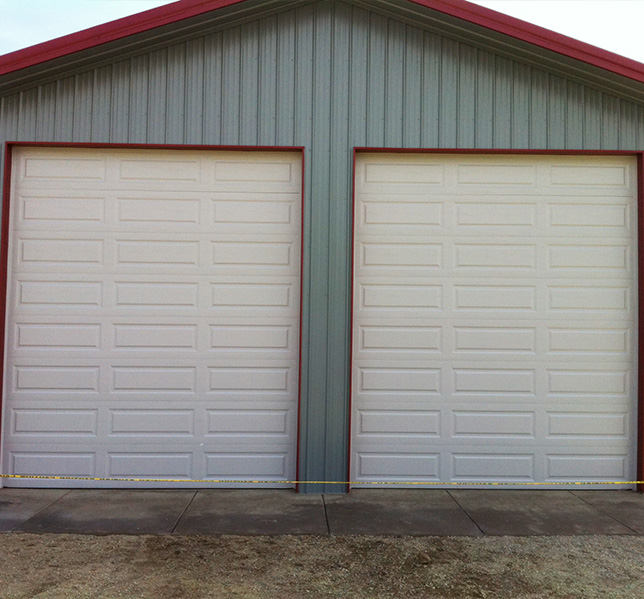A door is an essential component of a shed, and without one, your shed will be useless. Regardless of how your shed is used, an overhead door gives the security, safety, and convenience you require.
Choosing the right overhead door for your metal garage, on the other hand, is just as important as selecting the garage itself. If your garage is brutal to enter or has a small doorway, you won’t get much use out of it, and you won’t be able to do the things you want to do.
While selecting your Overhead door, here are some Essential points to be remember:
1. Size of the Door
Evaluate what you’ll be moving now and, in the future, using your overhead door. You’ll need to gather measurements of each vehicle you plan to park inside a metal garage if you’re building one at home. Remember to add inside mirrors when measuring the width of your metal building doors.
When calculating the overall height, remember to account for everything that is carried on top of the vehicle. Do you ever travel with mountain bikes or a canoe in your car? Is your RV equipped with an air conditioner or an antenna? We recommend ordering a metal building with an eave height at least two feet higher than the height of your tallest overhead door.
2. Usefulness of the Overhead Door
What you plan to do with your shed will also influence the overhead door you choose. Metal buildings can have both light-duty and heavy-duty overhead doors. For residential structures such as metal storage buildings or metal garages, light-duty doors are usually sufficient. In commercial applications such as warehouses, auto shops, commercial metal garages, and manufacturing plants, heavy-duty commercial-grade overhead doors are required.
3. Position of Overhead Door
It’s also crucial to consider the location of your overhead door. Overhead doors, like other aspects, are there to provide maximum strength. Overhead doors on the end walls, on the other hand, provide the most cost-effective solution.
Furthermore, many firms find that having overhead metal building doors on opposite sides of the structure allows heavy vehicles to drive through instead of having to back out. So, figure out where you want your overhead door to be and where you want it to go.
Metal garage doors come in a variety of styles:
• Sectional Doors
To make sectional doors, smaller horizontal door leafs/panels are hinged together and placed between two tracks on both sides of the door. Depending on the clearance, the sections can be raised horizontally back into the building above the door opening or vertically only above the entry.
• Roll-up Doors
Roll-Out Doors are made up of a continuous corrugated sheet that nestles into itself as it is rolled around a cylindrical drum at the top of the door opening, also known as coiling or drum doors.
• Sliding Doors
Sliding Doors can be mounted on an external or internal horizontal track system at the top of a frame’s opening. Depending on their weight and size, sliding doors may require support from the top track system or lower guide rail mounts and wheels.
• Bi-Fold Doors
Bi-Fold Doors, whether vertical or horizontal, have panel parts that are significantly wider than sectional doors, requiring fewer door panels. Although manual operation is an option, hydraulics with only the support of door heads or jambs is more typical than a full track system.
• Walk-in Doors
In metal buildings and other structures, walk-in doors are popular. You won’t be able to access your garage through the garage door, so a walk-in door will be necessary as a primary entrance. We offer walk-in doors in a variety of sizes for commercial, industrial, and agricultural building uses.
• Agricultural Doors
Metal hangar doors can fit any aircraft or vehicle, including huge agricultural or construction equipment. These heavy-duty doors may span large lengths without the necessity of exterior columns.


